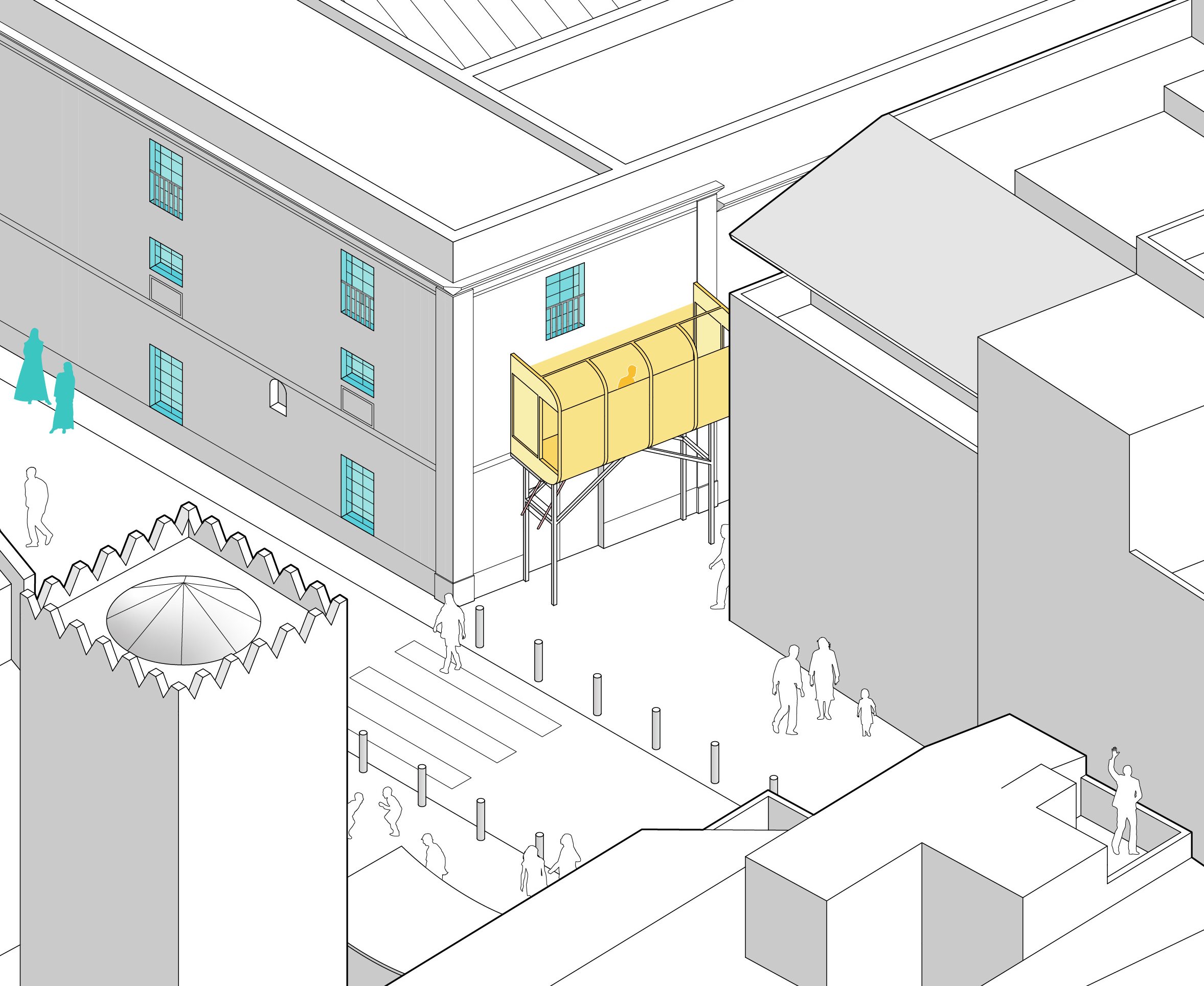
HABITABLE SCAFFOLDING
URBAN RESERVE: SCAFFOLDING
Seville, Spain
1997
Santiago Cirugeda
Piggybacking Tactic
Inhabit a Niche
Santiago Cirugeda’s project for a HABITABLE SCAFFOLDING demonstrates the subversive potential of niche-occupying piggybackings. It takes the form of a “prescription” for direct urban intervention, one of many ideas for DIY urbanism made freely available through Cirugeda’s website, Recetas Urbanas. In enacting this particular script, Cirugeda began by applying for a temporary scaffolding permit from the local planning department, ostensibly to repaint the façade of a protected building in a historic district of Seville, Spain. The repainting permit, however, was only a pretense; his true intent was to use the scaffolding as a parasitic urban appendage—a temporary shelter intended to extend the host building’s perimeter enclosure outward and into the space above the street, or simply to provide an “urban reserve” hidden in plain sight. Following the expiration of one permit, another could be secured for a different building site, and the process could begin again. This project—like much of Cirugeda’s work—was not only a commentary on the rigidity of local planning laws but also an expression of his desire to empower citizens with the means to modify the built environment in a more responsive and interactive manner. It was a recipe for democratizing the production of space and a set of tactics for refashioning the city from the bottom up.


